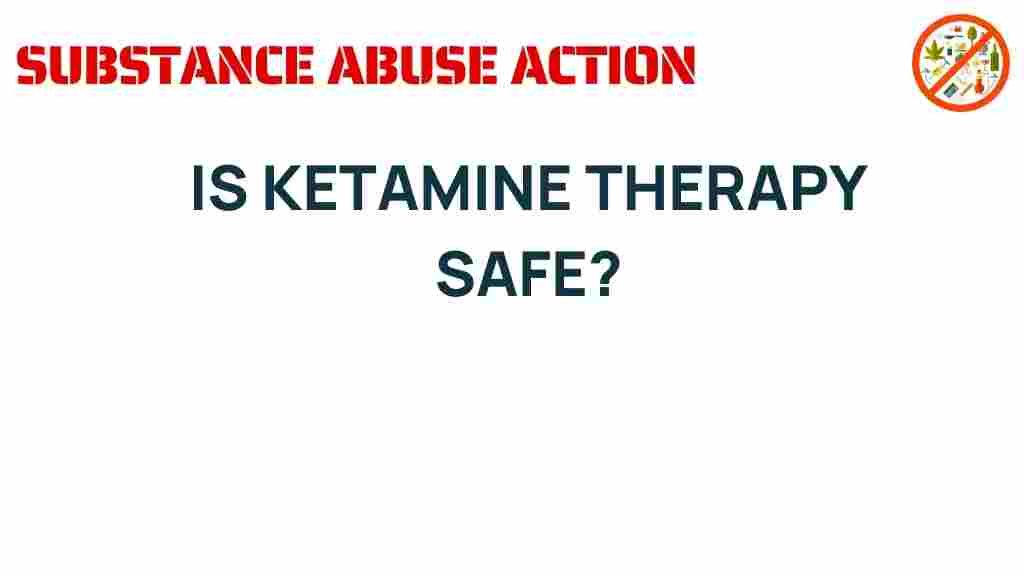Exploring the Safety of Ketamine Therapy: What You Need to Know
In recent years, ketamine therapy has emerged as a promising treatment option for various mental health conditions, particularly depression and anxiety. As mental health issues continue to rise globally, the therapeutic use of ketamine is gaining attention for its rapid effects and potential benefits. However, with any emerging treatment, safety concerns are paramount. This article will delve into the safety of ketamine therapy, highlighting research findings, patient experiences, and what you need to consider if you are contemplating this treatment.
Understanding Ketamine Therapy
Ketamine therapy involves administering ketamine, a medication traditionally used as an anesthetic, in lower doses to treat mental health disorders. Unlike conventional antidepressants that may take weeks to show effects, ketamine can provide relief from symptoms of depression and anxiety within hours. Here’s what you need to know about the process:
- Administration: Ketamine can be given intravenously, intranasally, or via intramuscular injection.
- Dosage: The dosage is typically lower than that used for anesthesia and is tailored to the individual’s needs.
- Setting: Treatments usually occur in a controlled clinical environment to monitor the patient closely.
Research Findings on Treatment Safety
Numerous studies have been conducted to evaluate the safety and efficacy of ketamine therapy. Here are some key findings:
- Research indicates that ketamine can significantly reduce symptoms of depression and anxiety, often within hours of administration.
- Long-term studies suggest that repeated treatments can maintain these positive effects, although individual responses may vary.
- Most side effects are mild and temporary, including dizziness, nausea, and dissociation, but serious side effects can occur in rare cases.
For more detailed information on recent studies, you can explore findings published by the National Institute of Mental Health here.
Patient Experiences: A Mixed Bag
Patient experiences with ketamine therapy vary widely, reflecting the subjective nature of mental health treatment. While many patients report significant improvements, others may encounter challenges. Here are some common themes from patient experiences:
- Rapid Relief: Many patients experience quick relief from depressive symptoms, often feeling better after just one session.
- Side Effects: Some report side effects such as confusion or changes in perception, which can be unsettling.
- Cost and Accessibility: Ketamine therapy can be expensive and is not always covered by insurance, making it less accessible for some patients.
It’s essential to consider these experiences when evaluating the safety and effectiveness of ketamine therapy for your mental health needs.
Safety Concerns: What to Watch For
While many patients benefit from ketamine therapy, there are safety concerns that potential users should consider:
- Pre-existing Conditions: Individuals with a history of substance abuse or certain psychiatric disorders should discuss their history with a healthcare provider before starting treatment.
- Monitoring: Continuous monitoring during and after treatment is crucial to ensure patient safety and address any immediate side effects.
- Long-term Effects: Research on the long-term effects of ketamine therapy is still ongoing, and patients should stay informed about new findings.
If you are considering ketamine therapy, it’s vital to consult with a qualified healthcare professional who can guide you based on your individual health profile.
A Step-by-Step Process for Ketamine Therapy
Understanding the process of ketamine therapy can help alleviate concerns and prepare you for treatment:
- Initial Consultation: Meet with a mental health professional to discuss your symptoms, medical history, and treatment goals.
- Evaluation: Undergo a thorough evaluation to determine if ketamine therapy is appropriate for you.
- Treatment Plan: Develop a personalized treatment plan, including the frequency and method of administration.
- Administration: The first dose is administered in a controlled environment, where you can be monitored for any immediate reactions.
- Follow-up: Attend follow-up sessions to track progress, adjust the treatment plan if necessary, and discuss any side effects.
This structured approach ensures that the therapy is tailored to your needs while prioritizing your safety.
Troubleshooting Tips for Patients
For those undergoing ketamine therapy, here are some troubleshooting tips to enhance your experience:
- Communicate Openly: Always discuss any side effects or concerns with your healthcare provider immediately.
- Stay Informed: Educate yourself about the treatment process, potential side effects, and what to expect.
- Support System: Engage with friends, family, or support groups to share your experiences and feelings during treatment.
Being proactive about your mental health and treatment can help mitigate safety concerns and enhance the therapeutic experience.
Conclusion: Making an Informed Decision
As the landscape of mental health treatment evolves, ketamine therapy presents a novel option for individuals struggling with depression and anxiety. While research findings support its effectiveness, it is crucial to weigh the potential benefits against safety concerns.
Ultimately, making an informed decision involves consulting with healthcare professionals, understanding the treatment process, and being aware of your own mental and physical health history. With proper guidance and support, ketamine therapy can be a valuable tool in the journey toward improved mental health.
For more information on mental health resources and treatment options, check out our comprehensive guide here.
This article is in the category Treatment and created by SubstanceAbuseAction Team
